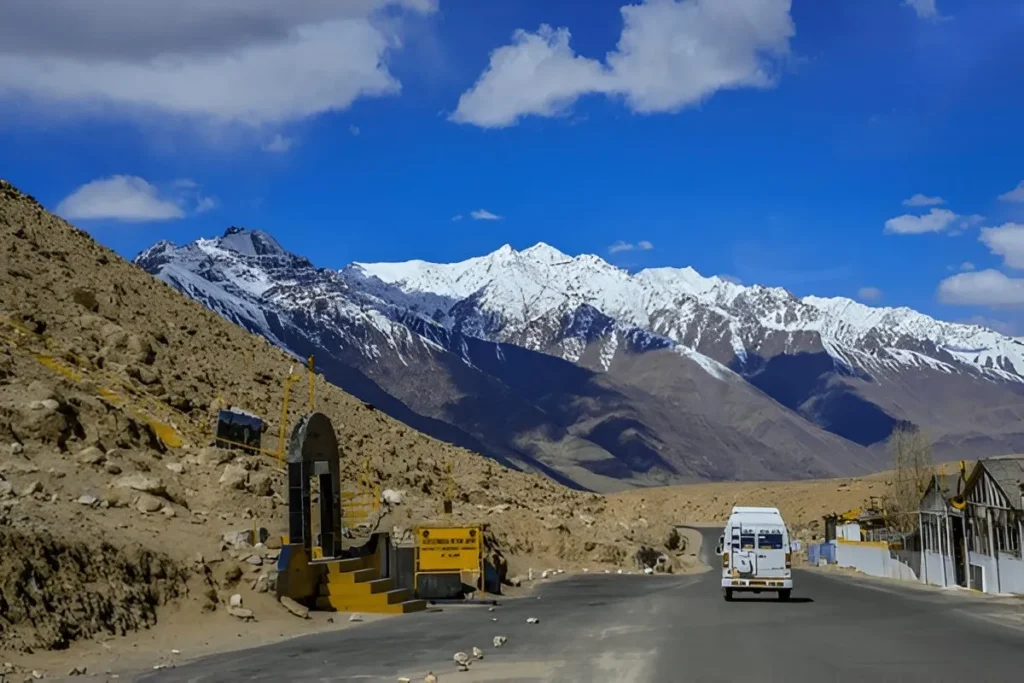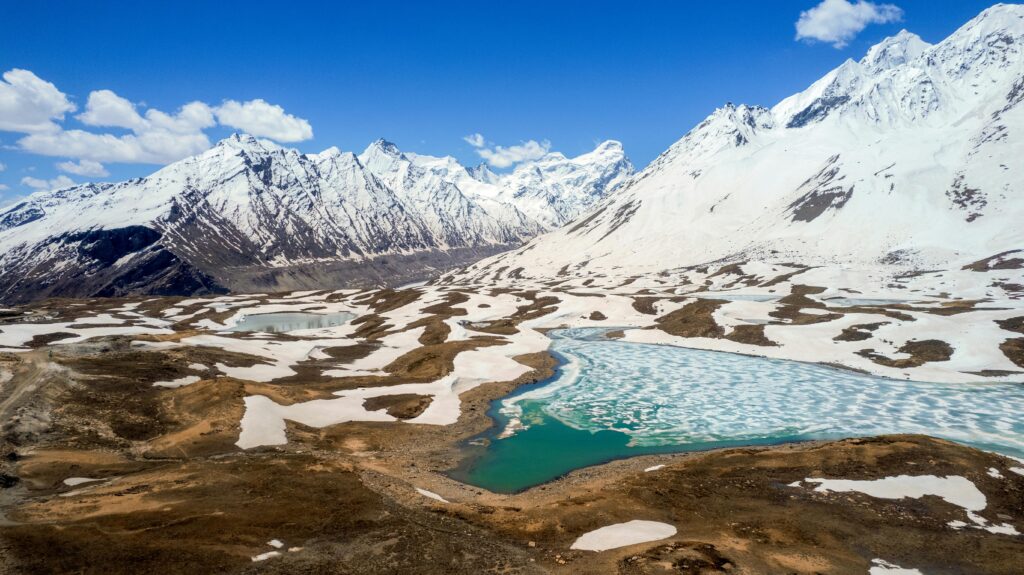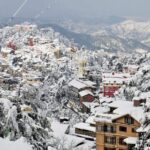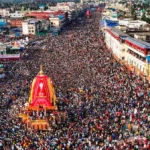Dreaming of a road trip? Who isn’t, right? Now, if Ladakh is calling your name—you’re already winning! But hold on, there’s one little detail that can make or break this adventure: timing. Yep, stuffing your backpack is the easy part, but figuring out when to visit Ladakh for that epic road trip? That’s where the real planning begins.
Spoiler alert: The best time for a Leh Ladakh Tour Package road trip is between May and September. But wait—why exactly? And is one month better than the rest? Don’t worry, we’ve got your back. This guide is packed with the must-know details to help you plan your journey perfectly, from the weather to road conditions and beyond.
Bonus tip: If you really want to turn the adventure dial up to max—go for a Ladakh bike trip. Trust us, the thrill of riding through the Himalayas on two wheels? It’s a whole different vibe!
Why Timing Matters for a Ladakh Road Trip

Imagine setting your sights on the surreal blue waters of Pangong Lake, only to find it hidden beneath a sheet of ice. Or visualizing yourself biking through green valleys, but arriving to snow-blocked roads and freezing winds.
That’s exactly why timing matters when planning your Ladakh road trip. This isn’t just another holiday—it’s an adventure where the right season can make all the difference.
1. Choose the Experience You Want
- Ladakh transforms dramatically with the seasons.
- If you’re after clear skies, green landscapes, and open passes, summer (May to September) is the best time to visit Ladakh by road.
- Prefer icy treks, snow-draped villages, and a white wonderland? Winter (December to February) delivers that dreamy, frozen vibe.
- So before packing your bags, ask yourself—what kind of Ladakh do you want to see?
2. Road Access Can Make or Break Your Trip
- Ladakh’s legendary routes—Manali to Leh and Srinagar to Leh—aren’t open all year. Come winter, snowfall seals off these highways, cutting off road access entirely.
- So, if you’re aiming for a classic road trip with scenic drives and high mountain passes, May to early October is your safest and most scenic window.
3. Adventure or Escape the Crowd?
- June to August marks peak tourist season. Expect vibrant bazaars, packed cafes, cultural festivals, and yes—higher prices across the board.
- But if you prefer a quieter journey, with peaceful monasteries and fewer travelers on the roads, late September to October is your perfect pick. You’ll witness golden autumn hues, crisp weather, and more affordable stays—all with fewer interruptions.
Suggested Read:- The complete FAQ Guide to Bike on Rent in Leh Ladakh
Month-by-Month Breakdown

May – The Season Begins (For Early Adventurers)
As spring starts to warm Ladakh’s rugged terrain, road trip season officially kicks off in May. The Srinagar-Leh Highway usually opens in early May once the snow at Zoji La Pass is cleared, while the Manali-Leh Highway follows later in the month. Expect crisp weather—day temperatures range between 10°C and 20°C, but nights can still dip as low as -5°C. Winds can be intense, especially at higher altitudes.
Pros:
- Fewer tourists make it perfect for travelers who prefer solitude
- Snow-covered landscapes with patches of melting ice create postcard-worthy views
- Hotels, camps, and tour services often launch with early-season discounts
Cons:
- Snow clearance may still be incomplete on some high passes early in the month
- Local dhabas, shops, and guesthouses reopen slowly—services might be limited
Best For:
- Bikers and thrill-seekers looking for an adventurous start to the season
- Photographers aiming for snow-capped mountain shots without the summer crowds
Best Time to Visit Ladakh with Family
June – The Perfect Start (Peak Season Begins)

By June, Ladakh is wide open for exploration. Popular routes to Pangong Tso, Nubra Valley, and Tso Moriri are fully accessible, and the roads—recently repaired after winter—are in their best shape. The weather is comfortably pleasant, with daytime temperatures around 25°C and nights staying just above freezing.
Pros:
- Excellent road conditions make it the smoothest ride of the season
- All major tourist attractions, cafés, camps, and fuel stations are fully operational
- Cultural celebrations like the Sindhu Darshan Festival add a festive vibe
Cons:
- Tourist numbers start to rise noticeably compared to May
- Accommodation and tour prices also begin to climb
Best For:
- First-time visitors who want full access and reliable weather
- Bikers and road-trippers seeking the most comfortable and scenic drives
July & August – Peak Tourist Season

July and August bring Ladakh to life with color, culture, and crowds. All routes remain open, making travel smooth and seamless. But be prepared—this is the busiest time of the year, especially at iconic spots like Pangong Lake and Nubra Valley.
These are also the warmest months in Ladakh. Daytime temperatures range from 18°C to 28°C, while nights stay comfortable between 5°C and 12°C—great for camping and outdoor adventures.
Pros:
- Warm, pleasant days make it ideal for exploring lakes, passes, and valleys
- The region’s most vibrant festivals take place, like the Hemis Festival (July) and Ladakh Festival (September)
- Every adventure activity is available—river rafting, trekking, camping, and biking
Cons:
- Expect heavy crowds and longer waiting times at popular tourist spots
- The Srinagar-Leh route may face occasional monsoon-related landslides
- Hotel and camp prices are at their highest during this peak season
Best For:
- Festival lovers, cultural explorers, and families looking to enjoy Ladakh at its liveliest
September – The Golden Month (Perfect Balance)

September is often hailed as the perfect month for a Ladakh road trip. With the monsoon retreating, the skies clear up, revealing dramatic landscapes and rich autumn hues. All major routes remain open, and the tourist rush begins to taper off, offering a calmer, more relaxed experience.
Daytime temperatures range between 10°C and 20°C, while nights cool down to 0°C–5°C—chilly, but still manageable with warm layers.
Pros:
- Post-monsoon clarity offers stunning visibility and brilliant photo opportunities
- Fewer tourists mean peaceful monasteries, quiet roads, and uncrowded viewpoints
- Accommodation costs drop as many hotels start offering end-of-season deals
Cons:
- Early snowfall can hit high-altitude regions by the end of the month
- Some camps and seasonal businesses begin closing after mid-September
Best For:
- Photographers, solo travelers, and anyone seeking a more tranquil Ladakh experience
October – The Last Window Before Winter

In October, Ladakh enters a quieter phase as the tourist season winds down. While major roads like Srinagar-Leh and Manali-Leh remain open, light snowfall begins gracing the higher passes, turning the region into a picturesque blend of golden trees and snow-dusted peaks. It’s one of the most peaceful times to explore Ladakh by road, with clear skies, crisp air, and a raw, untouched beauty that shines in autumn.
This month is ideal for travelers who enjoy solitude, scenic drives, and photography. However, as temperatures drop, many camps and guesthouses begin to close for the season—so booking accommodations in advance becomes crucial.
Suggested Read:- Best Time for Leh Ladakh Bike Trip: A Complete Biker’s Guide
Best Time for Ladakh Road Trip for Honeymoon
November to February – The Harsh Winter
From November to February, Ladakh transforms into a remote winter wonderland, reserved only for the brave. With temperatures plunging to -20°C or even lower at night, and heavy snowfall blocking both the Manali-Leh and Srinagar-Leh highways, road travel becomes impossible—leaving flights as the only way in or out.
This isn’t the season for a classic Ladakh road trip, but for those who can handle the extreme cold, it’s a magical time. Frozen lakes, snow-blanketed monasteries, and silent, icy landscapes create a surreal atmosphere. The iconic Chadar Trek on the frozen Zanskar River also happens during this period, attracting seasoned trekkers looking for a true winter challenge.
It may not be for the faint-hearted, but winter in Ladakh offers a rare, unforgettable adventure away from the crowds.
March to April – The Transition Period

As March and April arrive, the snow slowly begins to melt, marking the transition into the tourist season. The temperatures remain cold, but longer daylight hours make it easier to explore.
While most high-altitude routes are still inaccessible, the raw and untouched beauty of Ladakh in early spring attracts those looking for solitude.
Conclusion
So, when’s the best time for Ladakh road trip? Well, it depends on what kind of adventure you’re after! If you want clear roads, open passes, and pleasant weather, June to September is your best bet. Love the idea of snow-covered landscapes and fewer crowds? May and October can be great too. And if you’re up for a real challenge, winter (November to April) will test your limits!
No matter when you go, Ladakh will always be breathtaking. Just pick the right season for your vibe, plan well, and get ready for an unforgettable journey on the roads of the Himalayas!
Frequently Asked Questions (FAQS)
Q: Which month is best for a Ladakh road trip?
A: The best time for Ladakh road trip is from June to September, when all routes are open, and the weather is pleasant. September offers fewer crowds and stunning post-monsoon views. May and October are also good for adventure seekers but come with colder conditions.
Q: In which month is Ladakh open?
A: Ladakh is accessible by road from May to October. The Srinagar-Leh highway opens in early May, and the Manali-Leh highway by late May. Air travel is possible year-round.
Q: Is it best time to visit Leh Ladakh?
A: The best time to visit Leh Ladakh is between June and September, when the weather is ideal, all tourist spots are open, and roads are in good condition.
Q: Which is off season in Ladakh?
A: The off-season in Ladakh is from November to March, during the harsh winter months when temperatures drop below freezing and roads are closed due to heavy snowfall.
Q: What is the new rule for Ladakh trip?
A: Travelers now need an Inner Line Permit (ILP) to visit restricted areas like Nubra Valley, Pangong Lake, and Tso Moriri. Also, sustainable tourism guidelines encourage eco-friendly travel and restricted plastic use.







